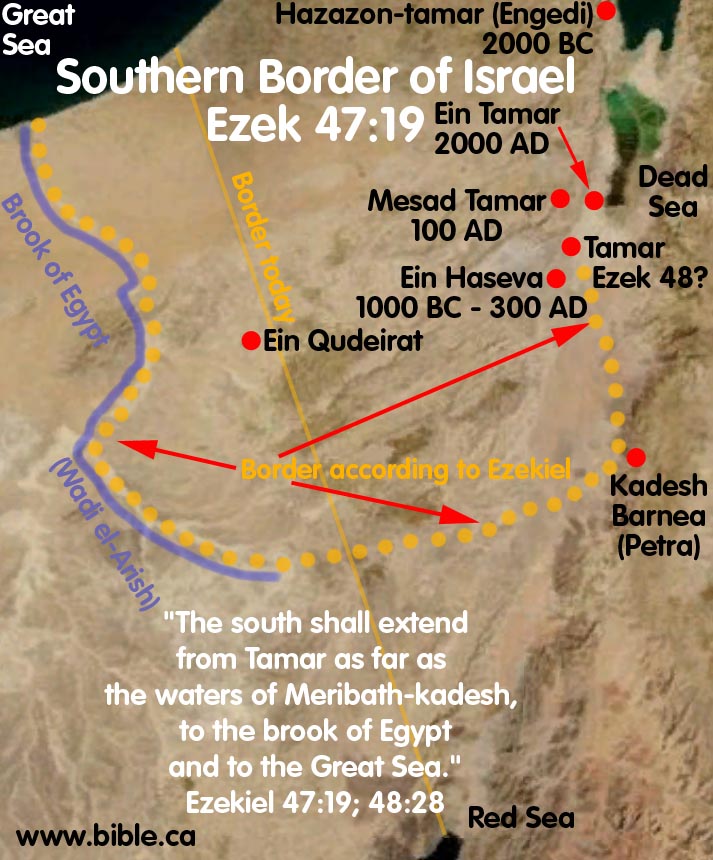
The search for Biblical Tamar (Ezek 48)
Tamar, Tamdar Syria, Hazazon-tamar and Tamara/Thamara
and the southern border of Israel
"The south side toward the south shall extend from Tamar as far as the waters of Meribath-kadesh, to the brook of Egypt and to the Great Sea. This is the south side toward the south." Ezekiel 47:19
"And adjoining the territory of Gad to the south, the boundary shall run from Tamar to the waters of Meribah-kadesh, from there along the Brook of Egypt to the Great Sea." Ezekiel 48:28
Introduction:
A. Tamar: (Arabah Valley)
B. Tamdar Syria (Tamar):
|
Tamar in the wilderness of Judah |
Tadmor in the wilderness |
|
"so Solomon rebuilt Gezer) and Lower Beth-horon and Baalath and Tamar in the wilderness, in the land of Judah, and all the store cities that Solomon had, and the cities for his chariots, and the cities for his horsemen, and whatever Solomon desired to build in Jerusalem, in Lebanon, and in all the land of his dominion." 1 Kings 9:17-19 |
" At the end of twenty years, in which Solomon had built the house of the Lord and his own house, Solomon rebuilt the cities that Hiram had given to him, and settled the people of Israel in them. And Solomon went to Hamath-zobah and took it. He built Tadmor in the wilderness and all the store cities that he built in Hamath." 2 Chronicles 8:1-4 |
C. Hazazon-tamar (Engedi):
D. The Madaba Map: Thamara/Tamara and
Ein HasevaE. Mesad Tamar and Ein Tamar
F. Discussion: Ezekiel's Tamar as part of the southern border?
"The south side toward the south shall extend from Tamar as far as the waters of Meribath-kadesh, to the brook of Egypt and to the Great Sea. This is the south side toward the south." Ezekiel 47:19; 48:28
Conclusions:
By Steve Rudd: Contact the author for comments, input or corrections.